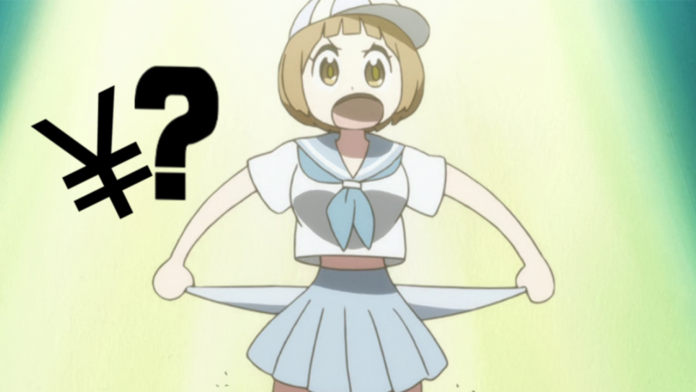A common misconception in anime is that consistent or stunning animation is dependent on a project’s budget. You may often hear people blame a show’s budget if they feel it looks weak visually, but in reality, budget is almost never the issue.
Budget’s impact on anime production
Producers fund animated projects based on an amount of resources that have proved successful. Funds are based on the size of the team and the length of the show they’re creating. In some cases, producers are generous with the funds they provide hoping to allow their team more creative freedom.
Kyoto Animation projects have consistently impressive visuals with “movie quality” detail and compositing[1]. Yet, it’s said that their usual production budget is very similar, if not the same, as usual production budgets. This is an example of a strong and passionate team achieving quality through strong direction and a healthy production schedule.
Almost every show has a similarly sized production budget. What makes an impressive project is a mix of talent, a comfortable team, passionate people, and a healthy work schedule.
Most fans don’t know that animators aren’t paid based on the quality of their work, they’re paid per cut. So what’s seen as an impressive product can be attributed to smart management and passion. No matter how well a shot is executed, animators are still paid a flat rate. Some animators set their own flat rate, but it’s generally the same for most in the industry.
“Making good quality animation on TV shows is not expensive, because if you make better animation, it’s your (an animator’s) own responsibility, you don’t get paid more on TV shows if you make more drawings. You get paid per cut, not per drawings, so if you make 500 drawings for two cuts, you don’t get the payment for the 500 drawings, but for the two cuts.” – BAHI JD, Europe meets Japanese animation
Looking at comedic shots in Kill la Kill
A specific anime where the “lack of budget” complaint often happens is the production of Studio Trigger’s Kill la Kill. This argument comes as reactions to scenes where elements of director Imaishi Hiroyuki’s comedic style are displayed.
For example, their use of still frames to slide characters across the screen in a goofy fashion. Using low framerate in a funny shot is often dismissed as a way to cut corners. In reality, it’s meant to achieve the childish nature of Imaishi’s comedic timing.
In the Kill la Kill production documentary, director Imaishi combed through a comedic scene’s rough layout[2] during the “layout check” phase of episode three. After deciding “there was too much movement,” he redrew the entire cut by himself. The use of sporadic movement fit the cut much better. Atop the finished product sat a note that simply read “Sorry”.
Never forget: animators are people
It’s important to try to understand the staff’s intention in situations like this. Assuming an anime’s budget is at fault for a shot not being impressive can be very harmful to animators. Most of all it can sway public understanding of how the industry functions in the wrong direction.
It’s easy to forget that hours of human labor goes into even the smallest of animated cuts in a show. Real people are putting their all into each drawing, even if it only shows up for less than a second. Saying a shot is “low-budget” devalues days of a team toiling away to make their project as perfect as they can within their often short deadline.

Another example of what some believe to be “low-budget” animation are known as “distance scaled characters”. Distance scaling is simplifying a character design as it’s drawn farther away. Though sometimes humorous, awkward distance scaling means nothing when it comes to the quality of an animated project. It’s also not a way to cut corners.
Though not a reflection of a project’s budget, intelligently planned out distance scaled designs can prevent awkward in-betweens. Skilled artists handle this with care, but not every art style is easy to simplify.
Life as an animator in the industry
If you’re watching a fight scene and wondering why it isn’t as spectacular as expected, it definitely has nothing to do with the production budget. The strength of the team handling the action portion of the episode will define how it looks. Of course, this does not mean that any specific person is at fault for this.
In an industry where overworking animators is commonplace, any artist should be celebrated. When entering the industry, animators usually begin as “in-betweeners”. From there, they fight against time to finish enough cuts for a livable wage. In this position, they also feel pressure to keep up with industry veterans. This is a very stressful place to be as an artist, and many animators leave this line of work at this phase.
If you had a window into the production of a show you’d find any number of reasons why something isn’t coming out extraordinary. Other than short deadlines, there may be incompatibilities within the team, weak direction, or that the studio might be focusing on another episode. This would leave the episode that disappointed you with less of an intensive team behind it.
“Budget and quality are not related, but if the budget is too low, staff will not gather.” – Naotoshi Shida, freelance animator on many Toei animation projects
What “high-budget” means in anime
Though you may expect a show with a “high-budget” to end up more impressive than an anime with normal funding, in the animation industry a “high-budget” can be a bad sign. Though it can afford an abundant team, that is often due to the lack of a healthy schedule.

With a lack of time, a large impressive team will scramble to meet their deadline while also trying their best to produce a good product. These sorts of mishaps happen scarily often in studios with unhealthy practices.
A key indicator of a poor schedule is when an “unimpressive” to “serviceable” episode airs despite featuring a long list of talented staff members. In animation, quality comes with passion and time. Hiring a large staff may increase efficiency, but doing so to finish in a quicker time frame, or last-minute panicking to complete a project, won’t yield a satisfying product.
An example of bloated production is the final two episodes of Attack on Titan season 1. I’m not critiquing those last two episodes, but the credits of those episodes are incredibly concerning.
Understanding the industry and anime budgets
It’s important that viewers look into the production of a show instead of blaming budget when things go wrong. Individual staff shouldn’t be at fault for the shortcomings of a finished product either. Any animator in the industry would work their fingers to the bone for the chance to make a scene that resonates with their audience. Unfortunately, that’s not always possible when making an anime. As previously mentioned, factors of time and management can be volatile.
“A lot of people have this common misconception that the quality of the actual animation is based on the production’s budget. But — generally, they all have the same budget. There are really rare situations where some have a little less, and some tend to have a little bit more, but nothing that is very drastic. So, in reality, it is based on the staff.” – Yatta-Tachi Interview: One-Punch Man’s Shingo Natsume & Chikashi Kubota
A majority of consumers really misunderstand the animation industry. Here in the West, translated information surrounding the industry and its happenings isn’t readily available. Through the power of passionate animation enthusiasts, and artists speaking out on the nature of the industry, we’re starting to learn and appreciate the medium in entirely new ways.
Hopefully, misinformation on this topic will stop spreading one day, and the hard work of these animators will be fully understood. Even if a project comes out disappointing, they’re still putting their heart and soul into every frame they draw.
Notes:
[1] Compositing is an editing process that takes place after the coloring stage. This is when they start layering everything together and apply post-processing effects to the animated cuts to give them a professional, and hopefully attractive looking finish.
[2] Layouts are a rough sketch of what will be the final cut. These set up the foundation of how a shot will look visually based on the storyboards. It will also give the animators a good idea of what the setting will look like.
Another example of Kubota Chikashi explaining One Punch Man season 1’s normal budget: https://twitter.com/kubo_chika/status/658611075936464896?s=20







